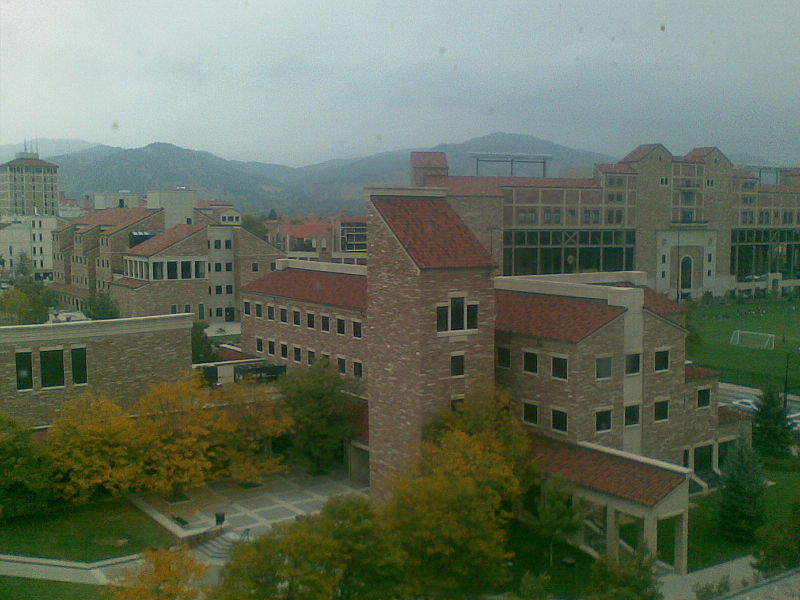The Cost of Free Tuition
The talk of the town these days, at least in my personal circles, is all about free tuition from public institutions. It’s never too far from the points of any possible conversation, and it seems to draw unilateral support from people my age. I try not to generalize, but this is just what I have seen. I’m not surprised at this reaction because it makes sense that the people who would be directly affected by this proposal (college-age young adults) would be the most passionate about its success. This article is not built around the argument that free college tuition is either a good or a bad idea, but is instead grounded in the economics of said proposal.
First, let’s delve into the real costs of college. Considering that the University of Colorado – Boulder will be home to a plethora of Air Academy students next year, including myself, I’ll use its prices as an example. For a year’s worth of in-state tuition at CU, the price tag is $11,091 (this number includes aid from the Colorado Opportunity Fund, and excludes the fees that stack up upon admission). Today, if a student earns a 4.0+ GPA in high school and at least a score of 33 on the ACT, they can receive $20,000 in pure scholarship money ($5,000 per year). Including fees, at least in the College of Arts and Sciences, the specialized schools at CU come with heftier tuition and fees, so the A+ student in high school will be paying between $7,000 to $7,500 for tuition per year. This number, although formidable in and of itself, doesn’t include a very crucial addition to the total cost of attending college– room and board. For freshman students, at the very least, room and board costs and fees make up more than the majority of the bills that will work their way into students’ lives. At CU, housing and a moderate meal plan will leave students approximately $6,750 in the hole– per semester. Even with free tuition, students will still be gouged for cash with the cost of living expenses included. After that first year of on-campus residency, the total price will go down, but will still be far from cheap. Free tuition would alleviate this burden, obviously, but to equate its removal to “free college” is a misnomer.
Now, I don’t think that many people will argue that a consistently strong student should have to pay the same amount of money that they might for a decent used car as they do for their college tuition each year. It’s fair to say that if you keep up with your work in college, you shouldn’t have to pay the university whose statistics and averages you’re boosting. However, that money needs to come from somewhere. I’m going to address the elephant in the room here– Sen. Bernie Sanders is at the head of this movement for free public tuition. Going off of this, Sanders, although avoiding specifics, has made clear that two-thirds of his plan will be paid for by the federal government, while the rest will be left up to the states. This sounds reasonable, but keep in mind the currently high costs of college. During our most recent recession, the states made a decision to slash the funding of higher-public education in place of keeping our safety nets and primary schools up and running. This wasn’t a popular choice among families, but defunding Social Security and Kindergartens is even less so. High costs of college aren’t due to greedy universities grabbing students by the ankles and shaking them free of every cent, it’s simply because the institutions are expensive to maintain and the government hasn’t been able to foot the bill. My point being, states are already being crunched for money as is, and if K-12 Education and Health and Human Services are expanded under a Democratic president, there won’t be much room at all to squeeze new costs into higher education. Ethics, morals, and beliefs aside, these are the real numbers.
Taking a leap towards the broad-strokes of the issue, according to the Sanders campaign, free tuition would cost around $63 billion for the entire nation. That doesn’t sound like much at all, but that’s because that number isn’t taking into account the other facet of the plan. Relief of student debt through both lower interest rates on student loans as well as through a complete forgiveness of debt if the individual can’t sustain their monthly payment. The student loan “epidemic” is clearly a real issue, and the number that is lurking behind the talk is $1.3 trillion. That’s the big total of all held student loan debt in the United States. From 2015 moving forward, it will cost around $39 billion annually in order to keep down the student debt in the next decade. This number is more than the federal government spends on Pell Grants each year, and the debate over whether or not the money should be spent retrospectively or prospectively is still very much alive.
It’s not my place to form conclusions about these estimates, so I’ll leave that up to you.













Sebastian Lloret • Feb 18, 2016 at 1:22 pm
The way I see it, this boils down to 5 points.
1. Baumol’s Cost Disease — As productivity has risen, wages have gone up. Unfortunately, teacher productivity hasn’t gone up as much in comparison because one teacher can only teach so many students in a room (whereas advances in technology have allowed other private and public sector workers to accomplish much, much more.) Since we tend to raise wages across the board, this creates a disproportionate cost of college.
2. Incentivizing High Costs — One of the primary metrics (used by US News and World Report publications) for university rankings is money spent per student. Since universities want to rank high on the list, they increase the costs as much as possible.
3. Wasteful Spending — Some colleges now spend more in administration than in faculty. Dorms are being built more and more luxuriously, raising the costs further. Campuses look nicer and nicer, but this also sends the cost of attendance soaring.
4. Subsidies — Government subsidies make college possible for many students. Funds like COF and Pell Grants lower the overall cost of tuition, therefore increasing demand, and since supply isn’t really rising we see an increase in cost. Leading to more subsidies. And then a higher cost. And over and over again.
5. Entitlement — Hate using the word, but everyone thinks they need a degree. We now have degrees in completely irrelevant fields (which I won’t name to avoid offending people pursuing worthless titles,) and we also have people without the ethics or “grey matter” to be able to get a degree. Nonetheless, this Ferris Wheel of education and “no child left behind” doctrine means everybody and their mother needs a degree to be successful. How can there be college educated citizens working at Starbucks when 6 figure welding jobs are in shortage? Trade schools used to be a huge part of America, but the transition to a service based economy has hurt a traditionally strong sector.
Now, it is my belief that if you WANT higher education, you should be able to. But this half-half solution doesn’t work. America pays more for a college education than any civilized nation in the world, even with federal and private grants. The cost to attend a university in Germany is what, 350 euro a year including textbooks? If we want to make it free, we could. We spend $20 billion (yes, with a b) a year on air conditioning in Iraq and Afghanistan. Yet millennials are “entitled” for wanting what is essentially a human right in the 21st century.
Jake Thornally • Feb 17, 2016 at 10:12 am
Feel the Bern!